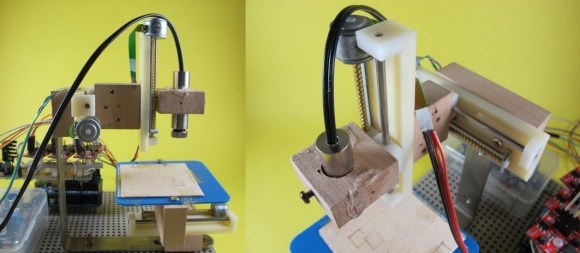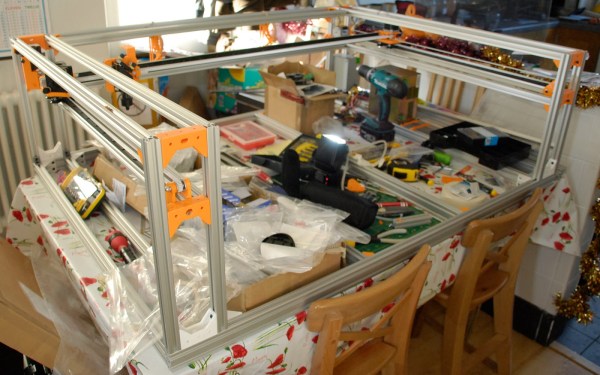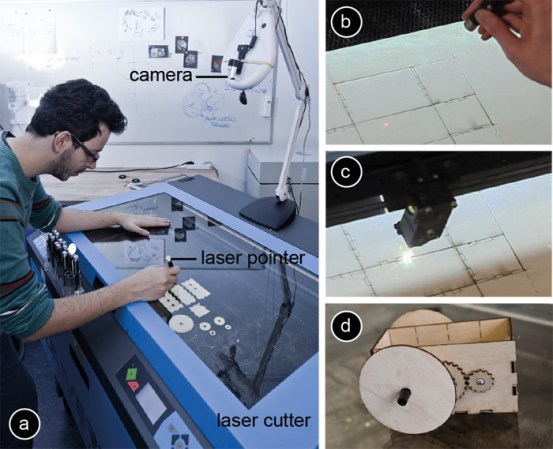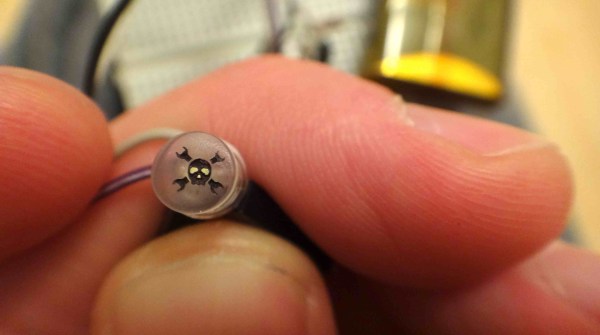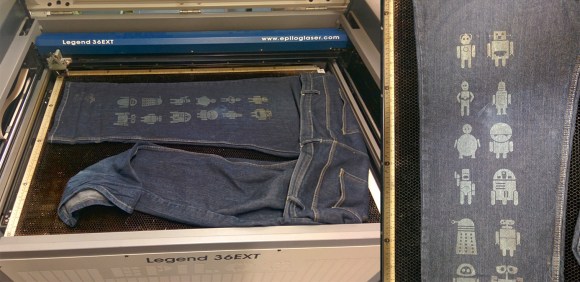
Finding new uses for your tools and equipment can be very exciting. [Foamy] wrote in to tell us about a blog post by [qbotics] that demonstrates etching designs into denim with a laser cutter. What a cool unexpected use for a laser cutter!
According to the Epilog laser cutter’s website, “we have engraved everything from denim to acrylic with fantastic results”. This inspired the author of “Science with denim” to try engraving jeans. After some experimentation, [qbotics] found that setting the 75W laser cutter to 15% power at 100% speed worked best. The results are quite impressive; the engraved pattern looks like naturally faded jeans. Amazing.
In the past, we have seen lasers engrave everything from calculators to wood. We would be curious to see if some of the DIY laser cutters could engrave denim as well. Give it a try and tell us about it!

